29 Authentic African Breakfasts to Wake Up Your Taste Buds
African breakfasts represent a vibrant culinary tapestry woven with cultural richness and diverse regional traditions.
Mornings across the continent burst with flavors that tell stories of heritage and community connections.
Each region offers unique morning meals that reflect local agricultural practices and historical influences.
Ingredients sourced from fertile landscapes transform simple dishes into extraordinary gastronomic experiences.
Nutritious and hearty, these breakfast options provide substantial energy for daily activities and celebrations.
Families gather around tables, sharing meals that connect generations through time-honored recipes and cooking techniques.
Regional variations showcase incredible creativity and adaptability in preparing morning nourishment.
Curious souls seeking genuine culinary adventures will find 29 authentic African breakfast experiences waiting to tantalize their taste buds:
Authentic African Breakfasts with Local Flair
African breakfasts are rich in flavor and variety, blending local grains, sweet fruits, and spiced stews. Wake up to traditions that make the morning meal something special.
Sfinz
Sfinz are traditional Libyan fried pastries bursting with cultural significance and delicate flavor combinations that transform simple ingredients into an irresistible street food experience.
Mediterranean bakers craft these golden treats using basic pantry staples like flour, sugar, yeast, salt, and water to create soft dough balls.
Skilled hands flatten these balls into thin pastry layers before carefully frying them to achieve a crispy exterior and tender interior.
Ramadan celebrations frequently feature sfinz as a popular breakfast dish or fast-breaking snack that brings families together.
Libyans often enjoy these pastries drizzled with sweet honey or topped with a perfectly fried egg for added richness.
Versatile dough remnants commonly become herb-infused bread, ensuring no ingredient goes to waste.
Street vendors and home kitchens across Libya prepare sfinz using time-honored techniques passed through generations.
Mediterranean culinary traditions shine through this simple yet delicious pastry that represents North African comfort food at its finest.
Bambalouni
Bambalouni are crispy, sugar-coated Tunisian doughnuts originating from Sidi Bou Said's rich culinary traditions.
These simple yet delicious pastries combine basic ingredients like flour, hot water, yeast, and salt into a golden-brown treat.
Tunisian bakers carefully fry the dough until it reaches a perfect crunch and deep amber color.
Sugar generously dusts the surface, adding a sweet finish to the street food classic.
Locals and visitors enjoy bambalouni as a versatile snack throughout the day.
Café settings often serve these doughnuts alongside strong coffee for a quick breakfast or afternoon break.
Mediterranean influences shine through in this straightforward yet satisfying pastry.
Street vendors and home kitchens alike craft bambalouni using time-honored techniques passed down through generations.
Shakshouka
Shakshouka transforms humble ingredients into a fiery breakfast sensation originating from Tunisia and beloved across North Africa and the Middle East.
Mediterranean spices blend with ripe tomatoes to create a robust sauce where eggs gently poach until perfectly set.
Home cooks craft this one-skillet meal by sautéing onions and peppers before adding tomatoes and warming spices like cumin and paprika.
Optional merguez sausage adds depth and protein to the already satisfying dish.
Fresh herbs such as parsley or cilantro often garnish the bright red sauce.
Restaurants and home kitchens serve shakshouka with crusty bread for soaking up the rich, spicy sauce.
Traditional preparation involves cooking everything in a single cast-iron skillet, creating layers of complex flavor.
Regional variations include different spice blends and additional ingredients like bell peppers or feta cheese.
Injera Fit-Fit
Injera fit-fit is an Ethiopian breakfast dish featuring torn injera flatbread mixed with spicy berbere seasoning, clarified butter, and onions.
Meat chunks or leftover sauces frequently enhance its rich flavor profile.
Ethiopians traditionally consume this hearty meal by hand or with a spoon, depending on serving style.
Regional variations include adding yogurt or chili peppers for extra zest.
Small pieces of injera get softened and blended with warm spices, creating a comforting texture.
Berbere's complex blend of chili peppers, garlic, and ginger provides deep, warming notes.
Families often prepare fit-fit as a quick morning meal using leftover ingredients.
Home cooks consider this dish a resourceful way to repurpose day-old injera while delivering maximum taste.
Ful Medames
Ful medames embodies Egypt's rich culinary heritage as an ancient bean dish dating back to Pharaonic times, discovered in 12th Dynasty tombs.
Slowly simmered fava beans seasoned with lemon juice, olive oil, garlic, and spices form this iconic breakfast staple consumed across North Africa and Middle Eastern regions.
Government regulation of bean prices underscores its critical role in Egyptian nutrition and social structure.
Traditionally served during Ramadan for breaking daily fasts, ful medames provides essential protein and energy for communities.
Multiple regional variations reflect local ingredient preferences and cooking techniques.
Street vendors and home kitchens alike prepare this hearty dish with pride and precision.
Egyptian families start their mornings with this nutritious bean preparation that connects generations through shared culinary traditions.
Simple ingredients combined with careful cooking methods transform humble fava beans into a deeply satisfying meal.
Fit-Fit
Fitfit, a spicy Ethiopian breakfast staple, transforms torn injera or kitcha bread into a flavor-packed morning dish seasoned with berbere and clarified butter.
Cooks shred the flatbread into small pieces and mix it with robust spices that give the dish its distinctive heat and aroma.
Ethiopian families typically prepare two versions: one using soft injera with chopped onions, and another using crisp kitcha bread paired with yogurt.
Regional variations add subtle differences in preparation and ingredients.
Berbere, a complex spice blend, provides deep red color and intense flavor to the dish.
Clarified butter ensures a rich, smooth texture that coats each bread fragment.
Breakfast tables across Ethiopia welcome this hearty, quick-to-prepare meal that energizes people for the day ahead.
Fitfit represents a simple yet powerful culinary tradition deeply rooted in Ethiopian cuisine.
Waakye
Waakye are traditional Ghanaian rice and beans crafted with a distinctive cooking method that transforms simple ingredients into a flavorful national staple.
Black-eyed peas and rice simmer together in a special blend of sorghum leaves, creating a rich brown color and unique taste profile.
Street vendors and home kitchens across Ghana prepare this beloved dish with pride, often serving it with an array of complementary sides.
Classic accompaniments include crispy fried plantains, spicy shito black pepper sauce, boiled eggs, and talia spaghetti-like noodles.
Gari foto, a mashed cassava sauce, adds extra texture and depth to the meal.
Northern Ghanaian regions first developed waakye, which has since spread throughout the country as a beloved breakfast and lunch option.
Versatile and filling, waakye can be customized with numerous ingredients to suit individual preferences.
Meat-based tomato soups and fresh avocados frequently complete this satisfying dish.
Bissara
Bissara ranks as a hearty bean-based comfort food spanning Egyptian and Moroccan cuisines, traditionally crafted from pureed split peas or dried fava beans transformed into a versatile soup, porridge, or thick dip.
Warm winter mornings welcome this protein-rich dish as a standard breakfast option across North African households.
Olive oil, fresh lemon juice, and crushed garlic provide essential seasoning for its smooth texture and robust flavor profile.
Home cooks generously sprinkle paprika and cumin over the creamy mixture, enhancing its earthy undertones.
Crusty bread serves as the perfect companion, allowing diners to scoop up every savory spoonful.
Mediterranean culinary traditions elevate this simple yet nutritious meal into a cherished morning staple.
Regional variations include different bean types and spice combinations, reflecting local ingredient availability.
Street vendors and family kitchens alike prepare bissara as an affordable, filling meal that connects generations through its comforting warmth.
Attieke
Attieke is a tangy fermented cassava couscous originating from Ivory Coast that transforms simple ingredients into a zesty cultural staple.
West African women traditionally prepare this fermented grain by grinding cassava roots and allowing them to naturally sour through controlled fermentation.
Regional families serve attieke with grilled chicken, fried fish, sliced onions, and fresh tomatoes as a complete meal.
Street vendors and local markets sell individual portions and large bags throughout Ivory Coast.
Households consume this versatile dish during breakfast, lunch, and dinner.
Its unique fermentation process gives attieke a slightly sour taste and distinctive texture.
Nutritious and protein-rich, the dish provides essential sustenance for communities across the region.
Affordable and easy to prepare, attieke remains a fundamental component of Ivorian cuisine.
Akwadu
Akwadu are sweet baked bananas originating from West African countries like Equatorial Guinea and Ghana, transforming simple fruit into a luxurious breakfast or dessert.
Fresh bananas get sliced and generously coated with melted butter before baking to golden perfection.
Orange and lemon juice add bright citrus notes while brown sugar and honey create a rich caramelized glaze.
Shredded coconut sprinkled on top provides a tropical crunch and complementary texture.
Bananas become soft and warm during the short baking process.
West African families often prepare this simple dish as a morning treat or light dessert.
Home cooks typically use ripe bananas for maximum sweetness.
Coconut enhances the tropical flavor profile and adds visual appeal to the finished dish.
Egyptian Omelette (Eggah)
Eggah stands as a robust Egyptian egg dish featuring versatile fillings that transform a simple omelet into a hearty meal.
Regional variations allow cooks to incorporate diverse ingredients like chicken, lamb, eggplants, leeks, spinach, or potatoes.
Eggs often serve as a binding agent rather than the primary component, creating a flexible culinary canvas.
Middle Eastern kitchens typically prepare eggah with layers of flavor and textural complexity.
Street vendors and home cooks alike embrace this traditional dish for its adaptability and satisfying nature.
Mediterranean influences shine through in its preparation method and ingredient selection.
Families frequently enjoy eggah as a quick breakfast or light dinner option.
Egypt's culinary heritage is beautifully represented in this simple yet substantial egg-based creation.
La Bouillie
La bouillie is a hearty Chadian breakfast porridge featuring rice or wheat blended with milk, flour, and peanut butter, creating a rich and creamy morning meal.
Rice and wheat form the primary base of this traditional dish, which families prepare with local ingredients available in their households.
Boiling transforms the mixture into a thick, warming consistency that provides substantial nutrition for the day ahead.
Milk adds smooth texture and extra protein to the porridge.
Peanut butter introduces a nutty flavor and increases the dish's protein content.
Regional variations allow cooks to customize la bouillie with additional ingredients like sugar or spices.
Each household might adjust the recipe based on personal preferences and ingredient accessibility.
Chadian families typically serve la bouillie steaming hot during morning meals.
Shahan Ful
Shahan ful represents a hearty breakfast staple originating from Ethiopia and Eritrea, featuring mashed fava beans simmered to creamy perfection.
Horn of African kitchens transform humble fava beans into a rich, spicy spread through slow cooking and careful seasoning.
Cooks blend the soft beans with zesty ingredients like onions, lemon juice, and berbere spice mix.
Chili peppers and fresh tomatoes add depth and complexity to the dish's robust flavor profile.
Each serving offers a nutritious morning meal packed with protein and bold regional spices.
Ethiopian and Eritrean families traditionally enjoy shahan ful as a warming, satisfying breakfast.
Regional variations might include additional garnishes like olive oil or fresh herbs.
Street vendors and home kitchens alike prepare this comforting bean dish with pride and precision.
Genfo
Genfo is a hearty Ethiopian porridge combining barley or wheat flour with boiling water into an incredibly thick, smooth mixture.
Ethiopians shape this traditional breakfast dish into a distinctive mound with a central well carved using an afinjal, their traditional coffee cup.
Spicy niter kibbeh (clarified butter) infused with aromatic herbs like besobela, koseret, and fenugreek fills the central depression.
Berbere, a complex spice blend featuring chili peppers and up to 20 different seasonings, adds intense flavor and color to the porridge.
Skilled cooks carefully stir the flour and water to achieve the perfect dense consistency.
Regional variations might include different grain types or additional spice combinations.
Families often enjoy this warm, comforting meal together during morning hours.
Genfo serves as a nutritious and satisfying start to the day across Ethiopia and Eritrea.
Gateaux Piments
Gateaux piments are crispy, spicy fritters that burst with Mauritian street food flavors and fiery chili heat.
These golden-brown snacks combine split peas, hot chili peppers, cumin, green onions, cilantro, and turmeric into bite-sized balls.
Mauritians enjoy these fritters as a popular street food and quick appetizer throughout the island.
Small balls of seasoned split pea mixture get deep-fried until they reach a perfect crunchy exterior.
You can find these addictive snacks at markets, street corners, and local restaurants across Mauritius.
Salt and spice create a tantalizing balance in each crisp bite.
Vegetarian-friendly ingredients make these fritters accessible to many diners.
Bananas In Coconut Milk (Kida Amin’Ny Voanio)
Kida amin'ny voanio represents a sweet Malagasy dessert blending tropical ingredients and warm spices in a creamy coconut-based preparation.
Green bananas or plantains form the core ingredient, slowly simmered in rich coconut milk until tender and caramelized.
Madagascar's culinary tradition transforms these humble fruits into a comforting delicacy through careful seasoning with brown sugar, cinnamon, cardamom, cloves, and vanilla.
Home cooks slice bananas thickly before gently cooking them over medium heat to develop deep, complex flavors.
Spices infuse the coconut milk, creating a warm and aromatic sauce that coats each banana slice.
Sugar caramelizes during cooking, adding depth and sweetness to the dish.
Coconut milk ensures a smooth, creamy texture that makes each bite luxurious.
Served warm, this dessert offers a perfect balance of sweetness and spice characteristic of Malagasy cuisine.
Mandazi
Mandazi are fluffy, deep-fried East African pastries originating from coastal Swahili regions with a sweet and slightly nutty flavor profile.
These golden-brown triangular or circular doughnuts feature a soft interior and crispy exterior made from a simple mixture of flour, sugar, yeast, and milk or coconut milk.
Street vendors and home kitchens across Tanzania, Uganda, and Kenya frequently prepare mandazi as popular breakfast or snack items.
Variations include adding ground peanuts or almonds for extra texture and richness.
Traditionally served warm alongside tea or coffee, mandazi offer a comforting and satisfying treat.
Families often enjoy these pastries during social gatherings and morning meals.
Street markets and local bakeries sell fresh mandazi throughout the day.
Travelers can find these delicious pastries as a quick and affordable snack in many East African cities.
Kinche
Kinche is a beloved Ethiopian breakfast porridge crafted from cracked wheat boiled in water or milk, offering a simple yet nourishing start to the day.
Rural and urban Ethiopians alike savor this hearty grain dish as a quick morning meal packed with essential nutrients.
Families prepare kinche by simmering wheat until soft and creamy, creating a smooth base for additional flavors.
Cooks often enhance the porridge with niter qibe, a spiced clarified butter that adds rich depth and warmth to the dish.
Traditional preparation involves frying onions and adding them directly to the wheat mixture for extra taste.
Some variations include serving kinche plain, while others prefer to mix in different spices or additional ingredients.
Ethiopian households consider kinche a staple breakfast option that provides sustained energy and comfort.
Regional differences exist in preparation methods, but the core ingredients and cooking technique remain consistent across Ethiopia.
Mofo Gasy
Mofo gasy are beloved Madagascar rice flour pancakes with a golden crispy exterior and soft inner texture that locals enjoy as a morning street food staple.
Charcoal-grilled in specialized round molds, these sweet breads emerge with a distinctive circular shape and light, airy consistency.
Street vendors prepare the batter by mixing rice flour with sugar and water before carefully cooking each pancake to achieve a perfectly caramelized surface.
Malagasy families often serve mofo gasy during breakfast alongside hot coffee.
Regional variations might include adding banana or extra sugar to enhance flavor.
Ingredients remain basic: rice flour, water, and sugar create these popular breakfast treats.
Madagascar's culinary culture celebrates mofo gasy as a beloved breakfast tradition that connects communities through shared food experiences.
Phaphatha
Phaphatha are traditional Botswana flatbreads with a unique circular shape and fluffy texture, crafted from simple flour and yeast ingredients.
These versatile breads are pan-cooked without water, creating a distinctive cooking method that sets them apart from other regional bread varieties.
Botswana families frequently serve phaphatha during substantial meals as a hearty accompaniment or standalone breakfast item.
Substantial in size, the flatbreads complement meat dishes and stews with their soft, slightly crisp exterior.
Regional cooks prepare phaphatha by carefully mixing flour and yeast into a smooth dough before gently cooking each piece in a hot skillet.
Traditional preparation techniques involve minimal ingredients and require skilled hand-kneading to achieve the perfect consistency.
Bread lovers appreciate phaphatha for its simplicity and rich cultural significance in Botswana's culinary landscape.
Locals enjoy these flatbreads as a comforting staple that connects generations through shared meals and cooking traditions.
Fatira
Fatira is a beloved Ethiopian street food pancake crafted from wheat flour, delivering an irresistibly crispy texture that makes breakfast extraordinary.
Street vendors and home kitchens across Ethiopia prepare this large, thin flatbread with expert skill and minimal ingredients.
Wheat flour transforms into a golden, delicate pancake that crackles when touched and melts in your mouth.
Ethiopians traditionally serve fatira with scrambled eggs, honey, or both, creating a simple yet satisfying morning meal.
Regional variations exist, with some cooks adding subtle spices or different toppings to enhance the basic recipe.
During Eid-al-Fitr celebrations, fatira becomes an even more special treat shared among families and friends.
Street markets and small restaurants showcase this beloved breakfast staple throughout Ethiopia.
Diners often cut the pancake into smaller pieces for easy sharing and enjoyment.
Futali
Futali represents a hearty Malawian breakfast staple featuring mashed root vegetables enriched with ground peanut flour.
Staple vegetables like pumpkin, sweet potato, cassava, and plantains form its core ingredients.
Cooks carefully boil selected vegetables in salted water until tender.
Mashing transforms the vegetables into a smooth, creamy texture.
Ground peanut flour gets blended into the vegetable mixture, creating a rich and nutritious dish.
Futali delivers a satisfying morning meal with distinct regional flavors.
Warm servings complement traditional side dishes like rice or nshima.
Malawian families enjoy this nutritious breakfast as a comforting start to their day.
Kitcha Fit-Fit
Kitcha fit-fit represents an authentic Ethiopian breakfast dish combining torn kitcha flatbread, clarified butter, and berbere spices into a spicy, hearty morning meal.
Ethiopian families prepare this unique bread-based creation by shredding crisp flatbread and mixing it with rich niter kibbeh (spiced clarified butter) and fiery berbere seasoning.
Berbere's complex blend of chili peppers, garlic, ginger, and aromatic spices infuses the dish with intense flavor and warmth.
Plain yogurt often accompanies kitcha fit-fit, balancing the spiciness with cool, creamy texture.
Unlike most Ethiopian dishes eaten with hands, this breakfast specialty requires a spoon for consumption.
Traditional preparation involves carefully tearing fresh kitcha bread into small pieces and thoroughly mixing it with butter and spices.
Rural and urban households across Ethiopia enjoy this quick, nutritious morning staple.
Regional variations might include additional ingredients like chopped onions or extra spices depending on local preferences.
Kikomando
Rolex is a popular Ugandan street food blending torn chapatti with beans and optional ingredients like avocado or chicken stew.
Street vendors quickly prepare this energizing meal by wrapping the chapatti around scrambled eggs and fillings.
Urban workers and students love the affordable, portable dish that emerged in the early 2000s.
Bobi Wine's music helped popularize the term, which references the movie Commando and soldiers' quick, nutritious meals.
Ugandan youth embraced rolex as a convenient breakfast or lunch option.
Street markets and roadside stands feature this iconic wrap nationwide.
Small towns and big cities alike celebrate the rolex as a symbol of creative street cuisine.
Affordable ingredients and fast preparation make rolex a go-to meal for budget-conscious diners.
Mofo Baolina
Mofo baolina are golden-brown Madagascar doughnuts bursting with cultural significance and irresistible texture.
Madagascar bakers craft these spherical treats using simple ingredients like flour, sugar, milk, eggs, and yeast.
Each dough ball rises carefully before being gently fried in hot oil to achieve a perfect crispy exterior and tender interior.
Street vendors and home kitchens across Madagascar serve these round delicacies as popular breakfast or snack options.
Families often prepare mofo baolina during celebrations and casual gatherings.
Traditional cooking methods ensure each doughnut maintains a consistent golden color and light, airy consistency.
Regional variations might include subtle spice additions or different frying techniques.
Generations have passed down these recipes, preserving Madagascar's rich culinary heritage through these humble yet delicious doughnuts.
Ramanonaka
Ramanonaka are Madagascar's beloved rice muffins crafted from a blend of semolina, rice flour, sugar, salt, water, yeast, and oil that transforms simple ingredients into a crispy street food sensation.
Street vendors and home cooks carefully mix these ingredients into a smooth paste, covering the mixture with a damp cloth to ferment overnight.
After rising, bakers drop spoonfuls of the batter into hot oil, creating golden-brown fritters with a light, airy texture.
The snack offers a delicate balance between crispy exterior and soft interior, making it a popular quick bite across Madagascar.
Locals enjoy ramanonaka as a quick breakfast or afternoon snack, often served warm and slightly greasy.
Regional variations might include additional spices or subtle flavor modifications.
Each batch reflects generations of traditional cooking techniques passed down through families.
Street markets and small food stalls frequently feature these irresistible rice muffins as an affordable, satisfying treat.
Goraasa
Goraasa is a spongy Sudanese flatbread that serves as a staple meal across multiple daily eating occasions.
Sudan's beloved bread transforms simple ingredients like flour, water, and salt into a versatile culinary canvas with remarkable adaptability.
Home cooks create this thick pancake-like bread by spreading batter directly in a hot pan, resulting in a soft, doughy texture that resembles a hearty tortilla.
Families enjoy goraasa throughout the day, pairing it with stews, sauces, and various protein dishes.
Its simple preparation makes it a quick and accessible bread for any meal.
Traditional recipes sometimes include baking powder for extra lightness.
Goraasa works perfectly as a utensil for scooping up sauces and meat.
Sudanese communities value this bread as a fundamental part of their daily nutrition and cultural food traditions.
Mbaazi Za Nazi
Mbaazi za nazi represents a rich Kenyan coastal delicacy featuring pigeon peas simmered in creamy coconut milk until the liquid reduces completely.
Swahili cuisine celebrates this nutritious dish as a staple side serving traditionally prepared with aromatic spices like turmeric, cumin, and garlic.
Regional cooks carefully balance hot peppers and onions to enhance the peas' natural earthy flavor.
Kenya's coastal communities frequently enjoy mbaazi za nazi alongside grilled fish or rice dishes.
Coconut milk provides a smooth, silky texture that complements the hearty legumes.
Native ingredients transform simple peas into a complex, flavorful experience.
Generations have passed down this recipe through family kitchens.
Spice combinations vary slightly between households, creating unique interpretations of this beloved dish.
Mkate Wa Maji
Mkate wa maji are thin, fragrant Kenyan crepes crafted from a simple blend of flour, water, eggs, sugar, and ground cardamom.
Ghee butter transforms the delicate batter into crisp-edged, golden pancakes that shine in Kenyan breakfast cuisine.
Cooks carefully prepare these crepes in a hot pan, creating a light and airy texture that melts in your mouth.
Sugar sprinkled on top adds a sweet crunch to the warm treat.
Kenya's traditional breakfast staple offers a quick and satisfying morning meal.
Ground cardamom provides a distinctive aromatic touch to the crepes.
Tea serves as the perfect companion drink alongside these light pancakes.
Families and street vendors alike enjoy mkate wa maji as a beloved morning ritual.
How Are African Breakfasts Typically Prepared or Served?
African breakfasts are wonderfully diverse, reflecting the continent’s rich cultural tapestry and use of local ingredients. Preparation and serving styles vary widely by region but share common themes of hearty, flavorful, and nourishing dishes:




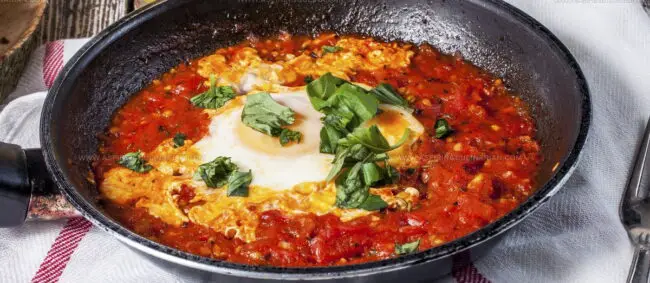
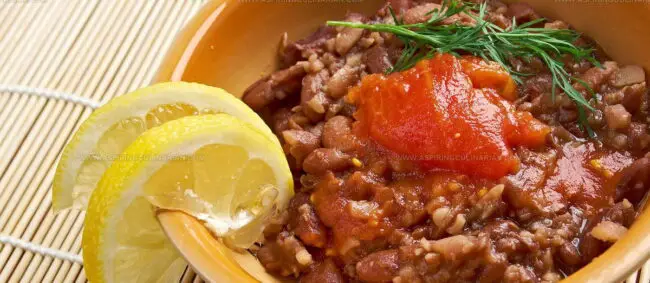
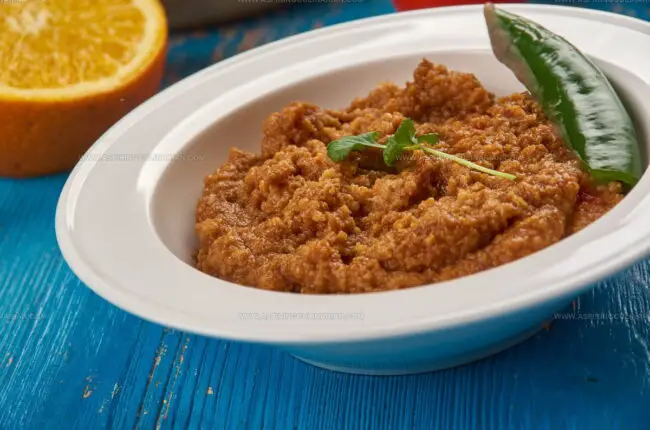
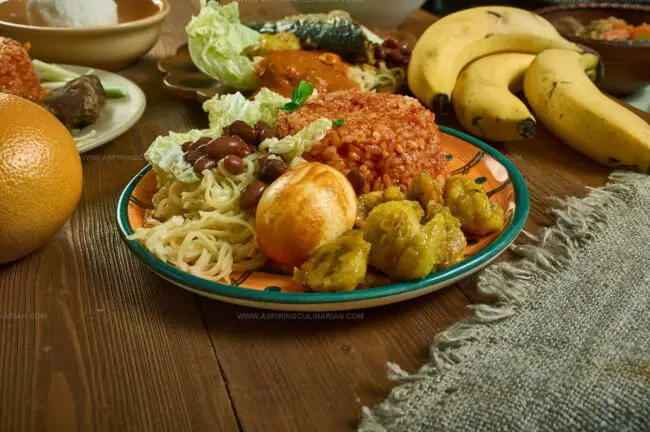
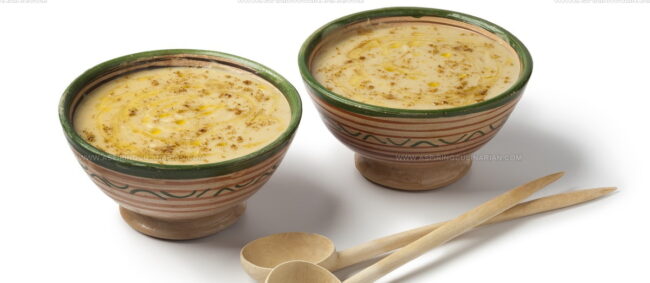
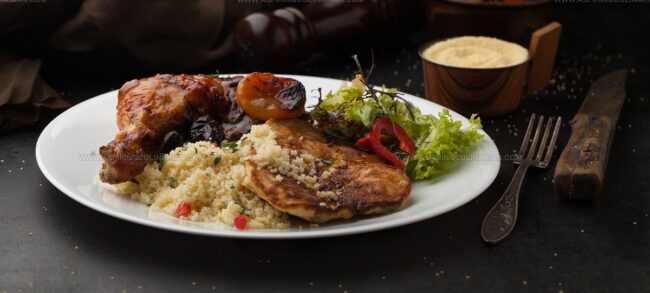
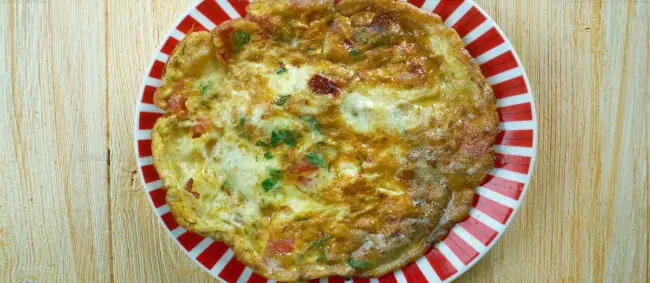
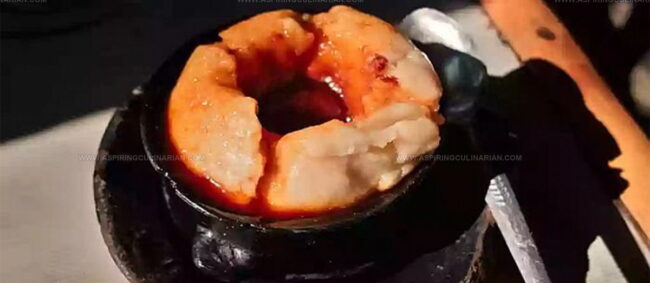
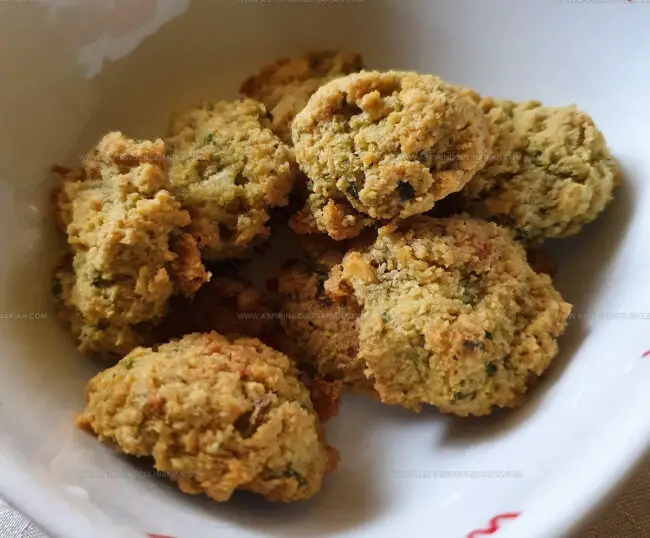
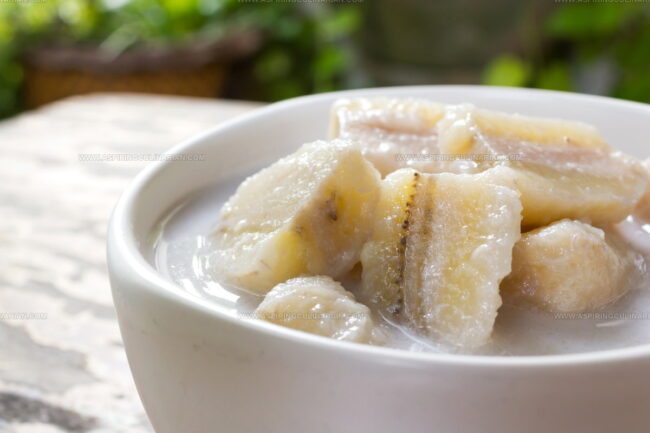
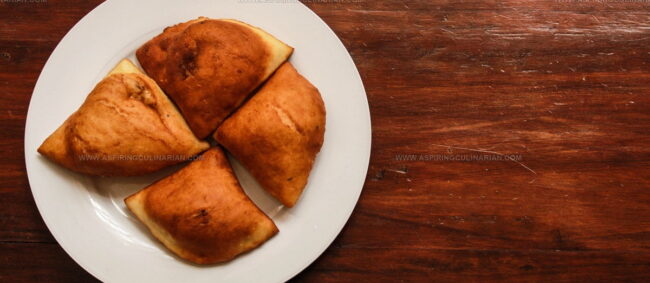
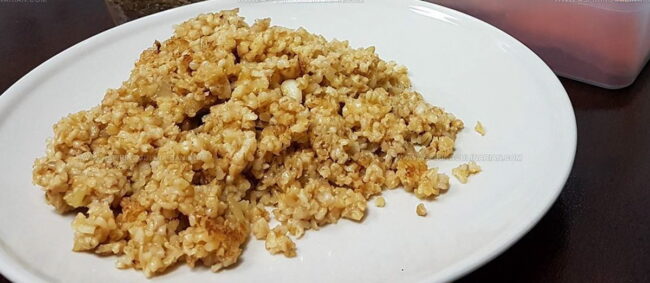

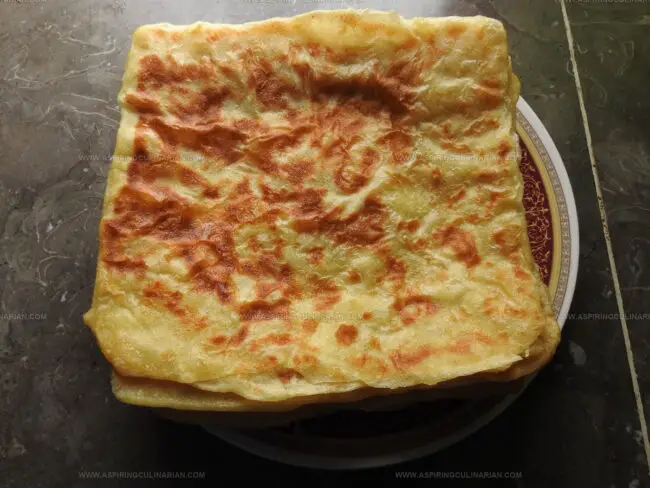
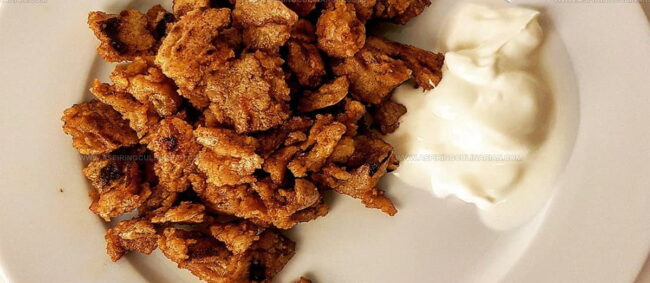
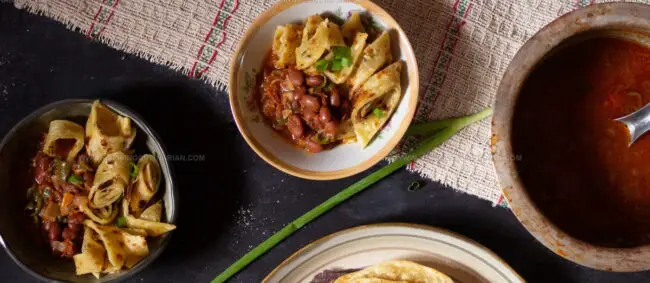
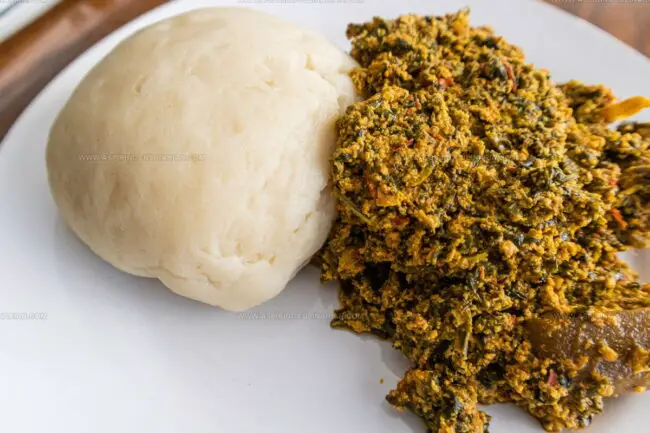
Lena Martinez
Contributing Writer & Culinary Educator
Expertise
Southwestern and Latin American cuisines, Vegetarian and plant-based recipe development, Culinary education and community outreach
Education
Santa Fe Community College, Santa Fe, NM
Certificate in Culinary Arts
Emphasized Southwestern cuisine and sustainable cooking practices
Lena grew up surrounded by the colors, spices, and traditions of the Southwest – flavors that sparked her love for bold, honest cooking. After earning her Culinary Arts certificate at Santa Fe Community College, she made it her mission to teach home cooks how to create flavorful, plant-powered meals without the fuss.
Her recipes are packed with vibrant ingredients, simple steps, and the kind of heart that turns a regular meal into something you’ll want to share. Outside the kitchen, Lena spends her time wandering farmers’ markets, trading family recipes, and helping young chefs find their voice through food.